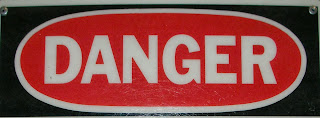Jason started the site because he discovered that many people who buy carbon monoxide detectors don't know how to install them in the correct locations in their home, which can lead to people being poisoned even though they have a detector or alarm installed. He posts reviews of carbon monoxide detectors as well as information on proper placement.
1. I think a lot of us grew up "before" carbon monoxide detectors, so could you give us a little background on how/why they have come into wide use?
Carbon monoxide poisoning has been a problem for a very long time; in fact it's still the most common cause of accidental poisoning in America today. The reason detectors have become widely used in recent years is two-fold: firstly, the electrochemical sensor technology that modern detectors use has become quite affordable (you can get CO alarms for under $20 these days), and the second reason is that many state governments have created laws requiring their use in homes which have fossil fuel burning appliances.
2. What do people need to know about the proper placement of detectors in their home?
This is the topic I cover in most detail on my website because it's vital to ensuring they work correctly in an emergency. If you put them in the wrong place, the sensors won't be able to detect the build up of CO gas until it's too late, or they won't wake you up at night, or in some places they will give false positives which means people end up turning them off or not taking them seriously when they sound--a bit like the "boy who cried wolf." But as the old saying goes, "the worst place to have them is still in the package they were in when you bought them."
3. How many detectors does an average home need?
This is where it gets a little complicated because it depends on factors like whether or not you have an internally attached garage, where the fossil fuel appliances in your home are, and a few other factors like that. For most homes, one in the basement if you have a furnace or gas powered water heater there, another one 15ft from your gas oven, stove, or fireplace, and one within 15ft of each bedroom is the minimum needed.
4. With smoke alarms, a lot of times they go off when there isn't really a fire but rather some smoke from cooking, etc. Does this happen with carbon monoxide detectors, too? What should you do if yours goes off and you don't think there's a problem?
You will only get false positives if you place a detector too close to a fossil-fuelled appliance. There are always trace amounts of CO gas produced when you're cooking, for example, and these low levels aren't dangerous over short exposure times during cooking--as long as your nearest detector is 15ft away, you won't have a problem unless it malfunctions. Most models run self-tests and have a testing button you can press if you're not sure. If the detectors sound the alarm, and you use the test button and it says it's working properly, then you must evacuate the house immediately and call 911. You must do this even if you don't think it's serious because your judgement is often affected when you're exposed to CO gas.
5. In reviewing detectors for your site, what criteria do you consider in choosing a good product?
I tend to take an epidemiological approach by presenting the models which will produce the greatest net benefit for the greatest numbers of homes, and I base my criteria on that. I also review some models which I recommend against using because I know people are looking for information on them when they visit my website, and if I don't provide them with the facts they need, they may go out and get one which is inappropriate for their circumstances. For example, I strongly recommend against using dual smoke and CO detectors because the sensors for each type of unit need to be in different positions for maximum effectiveness and safety.
Thanks, Jason!

No comments:
Post a Comment